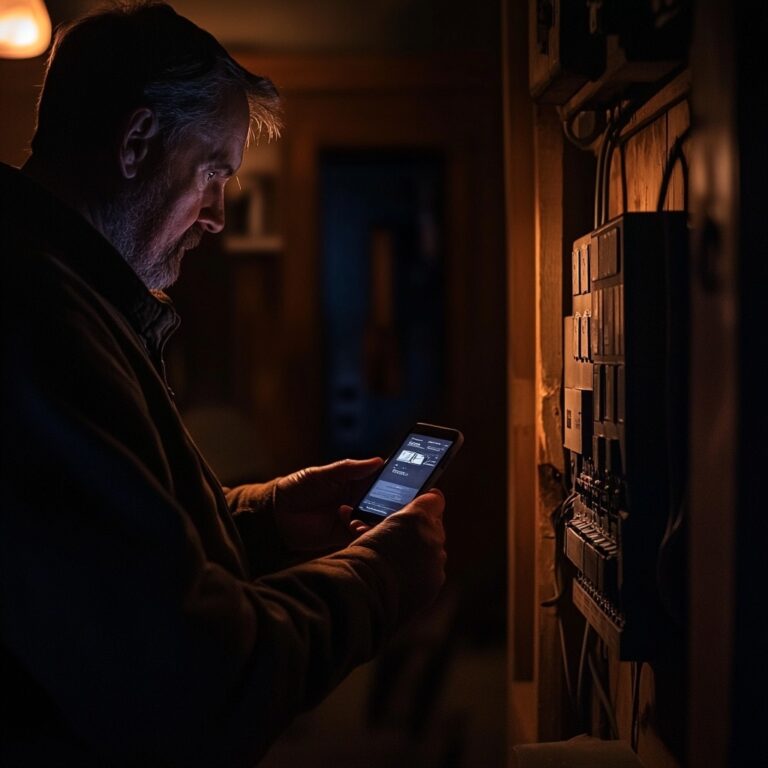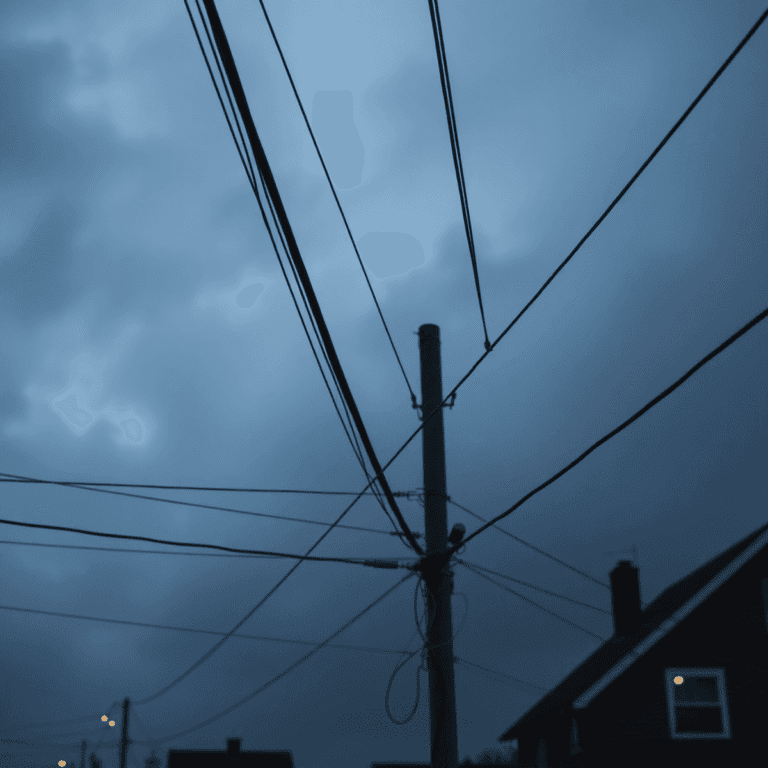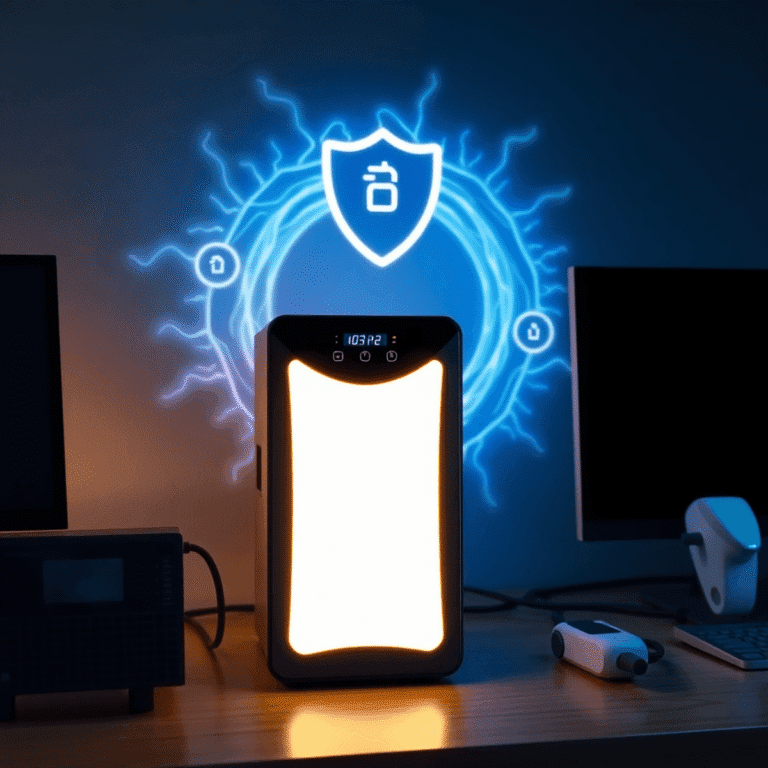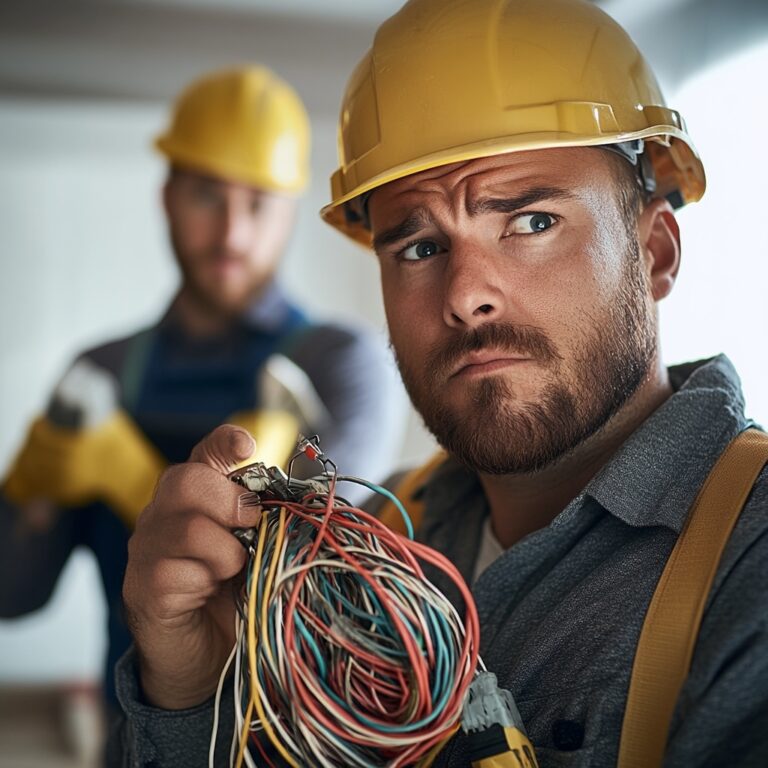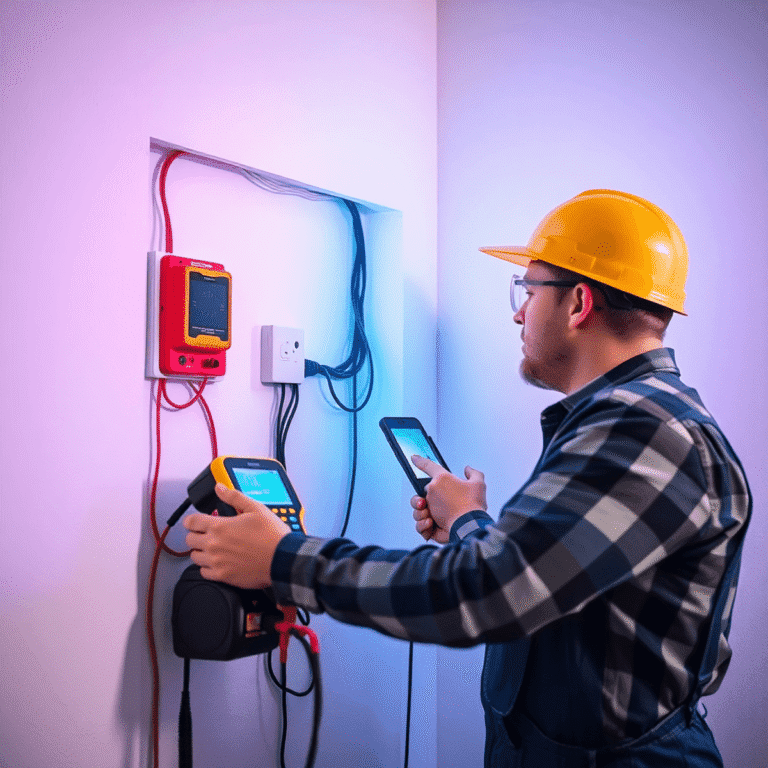Hidden Dangers of Outdated Wiring in Older Homes
Every year, hidden dangers of outdated wiring in older homes put families and properties at risk. Electrical safety risks often lurk behind walls, unseen and underestimated until a problem strikes. Many homes across Melbourne still rely on wiring systems installed decades ago—systems never designed for today’s electrical loads.
Outdated home wiring increases the likelihood of hazardous incidents, including:
- Electrical fires caused by deteriorated insulation or loose connections
- Electric shocks due to inadequate grounding or missing safety devices
Understanding what lies behind your power points and light switches is crucial for protecting your loved ones and investments. This article breaks down the most common types of outdated wiring, uncovers the risks they pose, helps you spot warning signs in your own home, and explains why upgrading to modern copper wiring isn’t just a convenience—it’s a necessity for safety and peace of mind.
If you’re concerned about the state of your home’s wiring, don’t hesitate to reach out for professional help. You can contact us for a thorough inspection and advice on necessary upgrades.
Understanding Outdated Wiring in Older Homes
Outdated wiring types remain a hidden feature in many Melbourne homes, especially those built before the 1980s. These systems were once standard but no longer meet today’s safety codes or power requirements. Homeowners often discover old wiring during renovations or when unexplained electrical issues arise.
Common Types of Outdated Wiring:
1. Knob-and-Tube Wiring
- Usage Era: Pre-1940s
- Key Features: Insulated copper wires run through ceramic knobs and tubes. No grounding wire is present, and connections are often wrapped with cloth tape.
- Risks: Prone to insulation breakdown, lacks grounding, and is highly susceptible to accidental contact and fire hazards.
2. Aluminum Wiring
- Usage Era: 1960s–1970s
- Key Features: Single-strand aluminum wires installed instead of copper due to cost savings.
- Risks: Aluminum expands and contracts more than copper, leading to loose connections that can overheat and spark fires. Insurance companies frequently flag this wiring as a significant risk.
3. Cloth-Insulated Wiring
- Usage Era: Early to mid-20th century
- Key Features: Copper wires covered in fabric insulation, sometimes with rubber underneath.
- Risks: Cloth deteriorates over time, crumbles in hand, and offers no resistance to moisture or pests. Most systems lack grounding conductors.
Comparison With Modern Copper Wiring
Modern copper wiring is designed with robust plastic insulation and includes a dedicated ground wire for safety. Copper’s conductivity outperforms aluminum, reducing heat buildup under load. Grounding conductors and compatibility with modern safety devices make today’s systems more reliable and less prone to fire or shock hazards.
Recognizing these outdated wiring types—knob-and-tube wiring, aluminum wiring, or cloth-insulated wiring—helps you understand why electrical issues persist in older properties and sets the stage for identifying specific risks associated with them.
Hidden Risks Associated with Outdated Wiring
Outdated wiring can pose significant hazards that are often hidden from plain sight. One of the most serious dangers is electrical fire hazards. Worn or damaged insulation in knob-and-tube wiring and loose connections in aluminum wiring can easily lead to overheating. This overheating may cause sparks or even fires, putting the entire household at risk.
Shock risks are another concern with outdated wiring. Many older homes lack proper grounding and do not have modern safety devices like Ground Fault Circuit Interrupters (GFCIs) and Arc Fault Circuit Interrupters (AFCIs). Without these protective mechanisms, electrical shocks are more likely to occur, which can result in severe injuries or even fatalities.
In fact, homes with outdated wiring systems often face significant insurance challenges. Insurance companies may refuse to cover homes with old and potentially dangerous electrical systems. Even if coverage is provided, homeowners might face significantly higher premiums due to the increased risk associated with such outdated infrastructure.
Understanding these dangers underscores the importance of addressing outdated electrical systems in older homes for enhanced safety and peace of mind.
Signs Your Home May Have Dangerous Outdated Wiring
Spotting the warning signs of faulty wiring early can prevent serious hazards linked to the hidden dangers of outdated wiring in older homes. Electrical issues in older properties often reveal themselves through subtle but persistent symptoms. Regularly checking for these signs helps protect both your property and your family’s safety.
Common Warning Signs Indicating Electrical Problems:
-
Frequent Circuit Breaker Trips or Blown Fuses
When your breaker trips or fuses blow regularly, it signals that circuits are overloaded or wires may be deteriorating. In houses with old knob-and-tube or aluminum wiring, these interruptions often point to dangerous overheating or short circuits within the walls. Consistent resets are not normal—they’re red flags for a deeper electrical issue. -
Flickering or Dimming Lights When Appliances Run
Lights should maintain a steady brightness regardless of what else is plugged in. If you notice lights flickering or dimming when turning on appliances, it suggests the wiring cannot support modern power demands. This symptom is common in homes still using low-capacity wiring from previous decades. -
Discolored or Warm Outlets and Switches
Outlets and switches should never feel warm to the touch or show brownish discoloration around the cover plates. Heat buildup here points to loose connections, damaged insulation, or overloaded circuits—all classic results of outdated electrical systems struggling with today’s appliances.
Ignoring these warning signs can escalate minor inconveniences into major safety threats—fire, shock, and expensive damage.
Early recognition gives you a head start in addressing faulty wiring before it leads to costly emergencies. Each of these symptoms offers critical insight into the condition of your home’s electrical system and signals it may be time for a professional inspection.
Why Older Electrical Systems Are Insufficient for Modern Power Needs
Older homes were designed at a time when daily electricity use was far lower than what’s typical today. The average house built before the 1970s often relied on service panels rated for just 30 to 60 amps. By contrast, contemporary households require panels with 100 to 200 amps to safely support modern appliances, entertainment systems, air conditioning units, and technology charging stations.
Low Amperage Capacity
A low amperage capacity restricts how much electrical current can flow safely through your home’s circuits. In practical terms, this limitation means:
- You can run only a few appliances or devices at once before tripping a breaker or blowing a fuse.
- Larger items like HVAC systems, electric stovetops, or even multiple computers can easily push older wiring beyond its limits.
- Adding new circuits or outlets becomes nearly impossible without upgrading the main service panel and existing wiring.
Electrical Overload in Older Homes
As families plug in more devices—think about phone chargers, microwaves, computers, gaming systems—the risk of electrical overload in older homes rises sharply. Outdated panels and undersized wires simply weren’t built to keep up.
Key risks include:
- Overloaded Circuits: Wires heat up as they try to deliver more power than they’re rated for.
- Increased Fire Hazard: Excessive heat from overloaded wiring may degrade insulation or ignite surrounding materials.
- Frequent Power Interruptions: Tripped breakers and blown fuses become part of daily life, indicating a mismatch between supply and demand.
Modern lifestyles demand electrical infrastructure built for higher capacity and safety. Outdated systems create bottlenecks that put both your comfort and property at risk.
Benefits of Replacing Outdated Wiring with Modern Copper Wiring
Upgrading to modern copper wiring brings a range of practical and safety-driven advantages to any older home. Copper wiring advantages are recognized across the electrical industry for their performance and long-term reliability.
Key Benefits of Copper Wiring:
- Durability: Copper resists corrosion and wear, meaning connections stay strong and secure year after year. This durability directly reduces the risk of loose connections—a common culprit behind electrical fires in outdated systems.
- Malleability: Installers can bend and route copper wiring easily without breaking it, making installation in complex or tight spaces much safer and more efficient. This flexibility lets certified electricians achieve the exact routing required for your home’s unique layout.
- Excellent Conductivity: Copper’s conductivity allows electricity to flow with minimal resistance, reducing heat buildup and energy loss. Lower resistance means your circuits work efficiently even under heavy loads from modern appliances.
Rewiring Benefits for Safety and Modernisation
Rewiring benefits extend well beyond material quality. Bringing your home up to today’s standards means every circuit can be properly grounded—a critical safety feature missing in many older setups. Grounding provides a safe path for stray currents, preventing electric shocks and equipment damage.
Modern copper rewiring also supports installation of advanced safety devices:
- GFCIs (Ground Fault Circuit Interrupters): These outlets cut power instantly if they detect current leakage—protecting against electric shock, especially in kitchens, bathrooms, and outdoor areas.
- AFCIs (Arc Fault Circuit Interrupters): These breakers sense dangerous arcing conditions—which often start electrical fires—and disconnect power before trouble starts.
By choosing copper rewiring, you enable these essential protections throughout your home, aligning with current Australian safety codes and insurance requirements. Homes upgraded with copper wiring not only handle today’s power demands but provide lasting peace of mind for property owners.
Professional Assessment and Upgrading Process
Hiring Certified Electricians for Thorough Inspections
To ensure the safety and reliability of your home’s electrical system, it is critical to hire certified electricians for a professional electrical inspection. Certified experts can identify potential hazards, such as faulty connections or worn insulation, that may not be visible to the untrained eye. An experienced electrician will:
- Conduct a comprehensive evaluation of existing wiring conditions.
- Identify outdated components that pose risks, including knob-and-tube or aluminum wiring.
- Assess overall system capacity and determine if it meets modern power needs.
Certified professionals like those at Protek Electrical and Data in Melbourne offer reliable inspection services, ensuring all safety standards are met.
Overview of the Rewiring Process
Rewiring an older home involves several steps to upgrade and modernize the electrical system effectively. The process typically includes:
-
Initial Consultation and Assessment
- Discussing the homeowner’s power needs and concerns.
- Evaluating the current state of the wiring through a detailed inspection.
-
Planning Upgrades Based on Home Layout and Power Needs
- Developing a rewiring plan tailored to the specific layout and design of the home.
- Ensuring the new wiring system can handle increased loads from modern appliances.
-
Executing the Rewiring Project
- Removing outdated wiring safely.
- Installing new copper wiring with proper grounding.
- Incorporating modern safety devices like Ground Fault Circuit Interrupters (GFCIs) and Arc Fault Circuit Interrupters (AFCIs).
-
Final Inspection and Testing
- Conducting thorough tests to confirm all installations meet regulatory standards.
- Providing documentation for insurance purposes.
Engaging professionals for rewiring services in Melbourne ensures your home’s electrical system is upgraded with precision and care, safeguarding against hidden dangers posed by outdated wiring.
Conclusion
Upgrading outdated home wiring is essential for ensuring the safety and efficiency of your home’s electrical system. By opting for modern copper wiring, you enhance the durability and reliability of your electrical connections, significantly reducing the risk of fire and electric shock.
- Professional assessment: Engage certified electricians to conduct thorough inspections and evaluations.
- Timely upgrades: Implementing updates promptly ensures compliance with insurance requirements and provides peace of mind.
Protect your home from the hidden dangers of outdated wiring in older homes. Seek expert help to maintain a safe, modern electrical system and enjoy a secure living environment.
FAQs (Frequently Asked Questions)
What are the common types of outdated wiring found in older homes?
Older homes often contain outdated wiring such as knob-and-tube wiring (used before the 1940s), aluminum wiring (common in the 1960s–1970s), and cloth-insulated wiring. These types differ from modern copper wiring by lacking grounding conductors and being more prone to deterioration and safety hazards.
Why is outdated home wiring considered a hidden danger?
Outdated wiring poses hidden dangers including increased risks of electrical fires due to worn insulation and loose connections, electric shock risks because of lack of grounding and modern safety devices, and potential insurance issues like refusal of coverage or higher premiums.
What signs indicate that a home may have dangerous outdated wiring?
Warning signs of faulty or outdated wiring include frequent circuit breaker trips or blown fuses, flickering or dimming lights when appliances run, and discolored or warm outlets and switches. These symptoms suggest electrical problems linked to old wiring systems.
How do older electrical systems fall short for modern power needs?
Older homes typically have lower amperage capacity, around 60 amps, which is insufficient for today’s power demands that often require up to 200 amps. This leads to overloaded circuits and increases the risk of overheating and electrical hazards.
What are the benefits of replacing outdated wiring with modern copper wiring?
Modern copper wiring offers advantages such as durability, flexibility for installation, and excellent conductivity. Rewiring with copper enhances home safety by enabling proper grounding and supporting modern safety devices like GFCIs and AFCIs, significantly reducing fire and shock risks.
Why is professional assessment important before upgrading old home wiring?
Hiring certified electricians ensures a thorough inspection to evaluate existing wiring safety. Professionals can plan rewiring upgrades based on your home’s layout and power needs, ensuring compliance with current standards and enhancing overall electrical safety.


